The Lost Art of Gifting Watches
Bosses aren't as generous now that Datejusts cost more than $350
The Precursor
Sadly, watches are rarely given as gifts in the West these days. Perhaps it's due to the now prohibitive costs - a golden Rolex for 25 years of service is definitely a tradition left behind in the 1980s. Fortunately, Japan still cherishes the art old-fashioned watch giving. Over the years, this custom has led me down countless rabbit holes as I’ve explored the unique engravings found on Grand Seiko casebacks, each telling a stories of retirement, marriage, graduation, and the birth of children. Today, I’m excited to part with one of my favourite discoveries - a "Long Service" watch with an easy-to-imagine story behind it.
Grand Seiko SBGF009 / 8J55-0010
Watches like this are why I choose the name “Provenance Watches”. There’s something deeply captivating about imagining the life your vintage watch led before it ended up in your hands. Thanks to Japan’s enduring tradition of gifting watches, the provenance of a timepiece is often beautifully engraved on the caseback.
It reads: Awarded to Isao Kanazawa for Long Service by the Minister of Posts and Telecommunications. 20 April, 2000.
Due to a merger with the National Telecoms Service, this was the governmental name for the Post Office in Japan in 2000. “Long Service” in Japan is typically awarded after 30 years at the same company, and because of his distinctive name and knowing approximately how old he was in 2000, I was able to discover he left the Postal Service in the 2010s and later took a position at another government agency, retiring in 2018.
This watch is far from mint condition, and that’s part of its charm. You can tell Mr Kanazawa really wore it—and by that, I don’t mean it’s beaten up, but rather that the dial has developed a “tropical” patina. This ageing suggests the watch was frequently worn by someone who loved being outdoors. Combine this tropical dial with the caseback’s story, and it’s easy to picture Mr Kanazawa proudly wearing the watch as he delivered mail around his local area. For those unfamiliar with the watch, here’s a quick comparison:
The watch itself is no slouch. It houses the legendary 8J thermocompensated HAQ movement, which represents Seiko’s last “whatever the cost” approach to making quartz movements, before being replaced by the more economical 9F calibre. Like the 9F, the 8J boasts accuracy of +/- 10 seconds per year, but dedicated testing by the WUS community shows the 8J consistently outperforms the 9F across all temperature ranges:
While the 8J lacks the Twin Pulse Control Motor, which enables the 9F to move heavier hands with precision, it makes up for this with a superior battery life - five years compared to the 9F’s three.
Citizen Campanola 4386-T022332 Moon Phases
A moonphase, but not as you know it. Instead of using a small disc that gradually reveals a single image of the moon as the month progresses, Citizen has transformed the disc into the entire dial. Yes, the dial itself rotates in sync with the lunar month. This not only provides a fascinating and easy-to-read display of the moon’s phases each day but also offers a scientifically accurate representation of the following:
Lunar Age
Lunar Position
Sun Position
Time of Sunrise and Sunset
Time Moonrise and Moonset
An accurate drawing of the moon and its craters
Fully understanding the manual for this watch might just be the first step to launching your career at NASA. I won’t even attempt to summarise it here - consider giving it a read for yourself. It’s as fascinating as it is utterly mind-boggling.
Whether or not you manage to navigate the entire manual (your PhD would presumably be mailed to you automatically), the watch itself is undeniably striking. Even if you only use it as a daily moon calendar, it’s sure to leave you satisfied.
Seiko 6347-5000 Automatic Moonphase
Now this a moonphase I understand. As you may or may not know, this is the only automatic moonphase Seiko has ever made. Released in 1986, it quickly vanished from Seiko’s line-up, making it a particularly elusive piece to track down.
It might seem hard to believe that Seiko hasn’t produced another automatic moonphase in the 38 years since, but they haven’t. While they’ve released plenty of quartz and kinetic moonphases, this unique model remains the sole automatic. And it carries that distinction with pride, featuring a Genta-inspired case and a beautifully layered dial. The starry edge sits several millimetres above the sunken dial, framed by a finely fluted chapter ring.
The watch is in great overall condition, though there are minor signs of wear on the case. The dial and crystal, however, are pristine. The bracelet is not original but is a vintage Seiko bracelet from the same era, taken from a Seiko 7C17-8000 (Seiko’s Braille watch).
Campanola 4391-T003516 / CTV57-0752 Cosmosign 203 “Zodiac”
Visually impressive and unique, but still easy to use. The Cosmosign “Zodiac” doesn’t let itself be outdone by the scientific precision of the previously discussed Campanola Moonphase. This watch accurately displays 1,027 stars and 166 galaxies and nebulae, as seen from the 35° N latitude - which includes places such as Japan, Texas, California, and Arizona.
Much like the Moonphase, the star chart rotates as time progresses, ensuring an accurate portrayal of the night sky throughout the month. The stars are colour-coded based on temperature and are sized proportionally.
Just for fun: A Cast Iron Grand Seiko Paperweight
The GS9 Club is the Grand Seiko Collector’s Club, based in Japan. Becoming a member is simple - just purchase a new Grand Seiko from an official boutique or retailer and send in your registration. From time to time, members receive exclusive offers, rewards, and opportunities, like this cast iron paperweight! I’m still waiting for an invite to tour the GS HQ - probably the pinnacle of the GS9’s offerings.
Cast in solid iron, and made the traditional way by a Japanese Ironworks company called Iwachu, the paperweight is hefty with a soft felt underside to protect your desk from scratches.
For those curious about the GS9 name, “9” is a homophone for the Japanese word kyū, meaning "ultimate." This comes from the fact that 9 is the highest single-digit number. Grand Seiko has thoughtfully linked this with its "ultimate" calibres: the 9R Spring Drive, 9S Mechanical, and 9F Quartz.
Don’t forget to follow my Instagram to see all of the watches above in full cinematic glory.





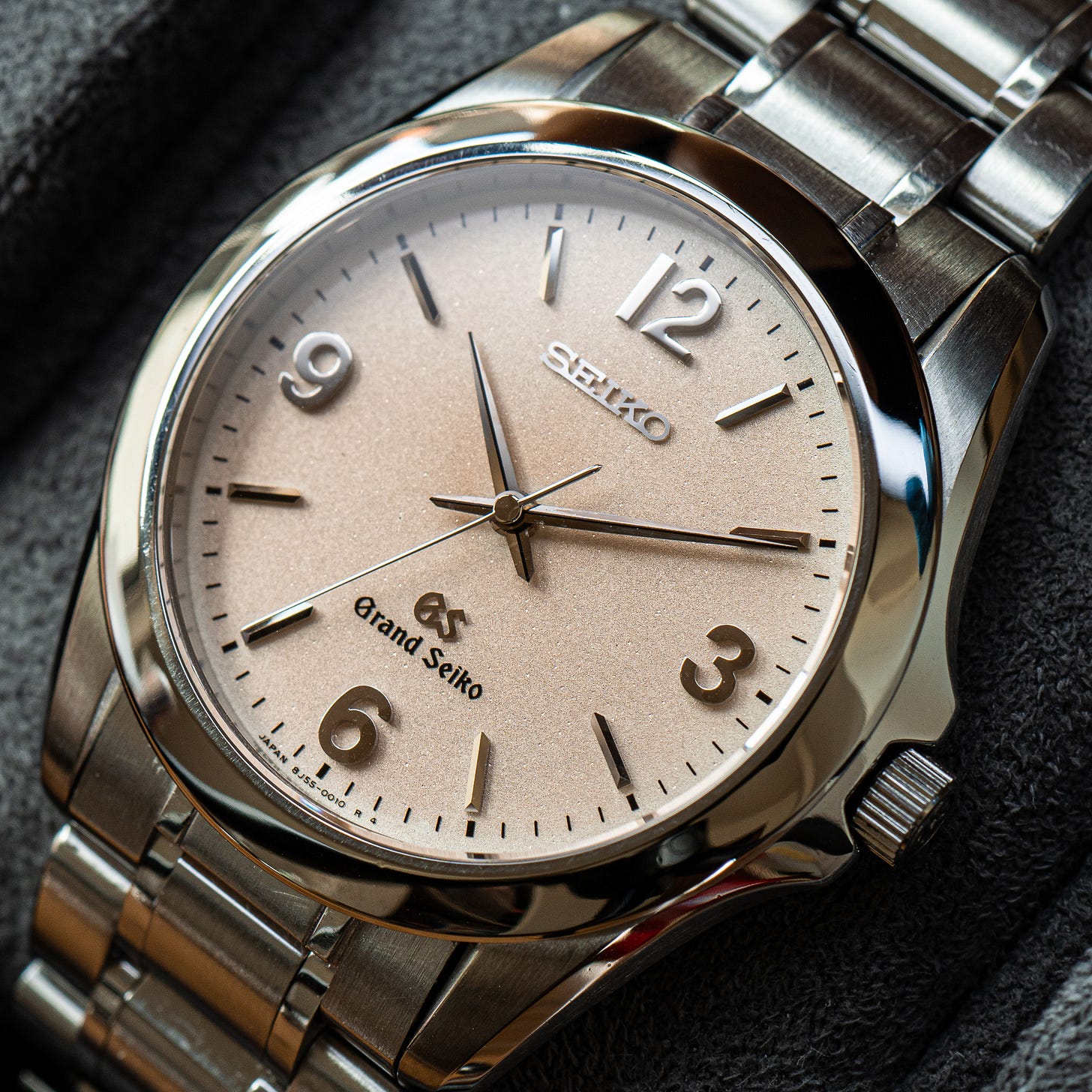
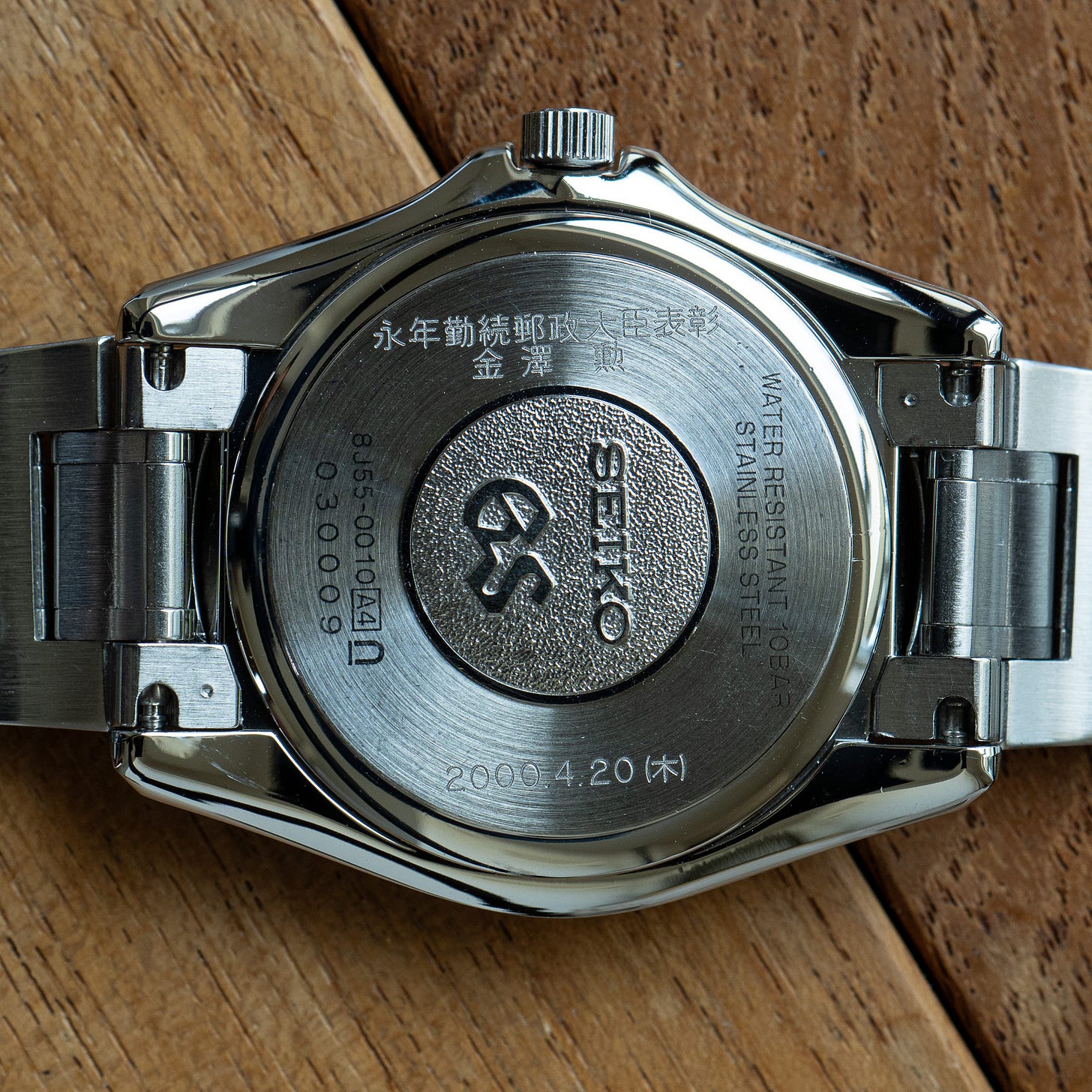

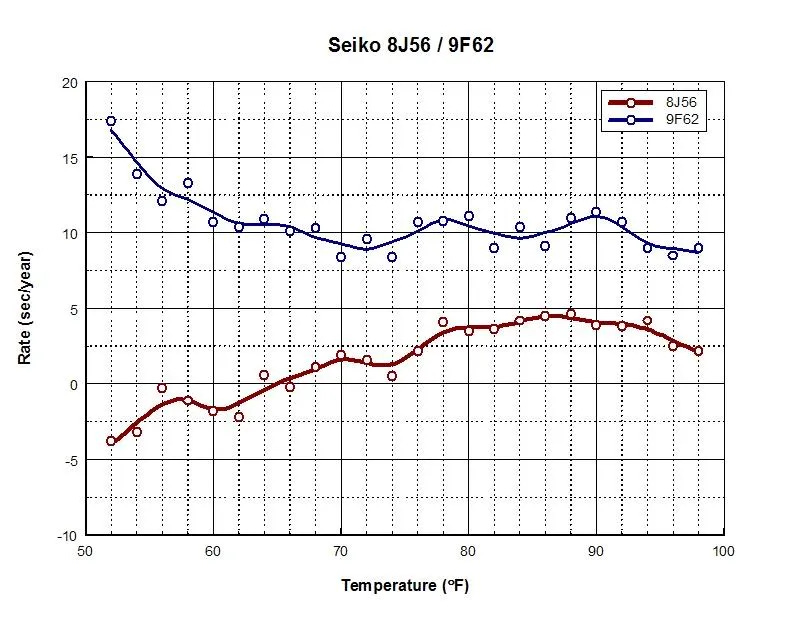

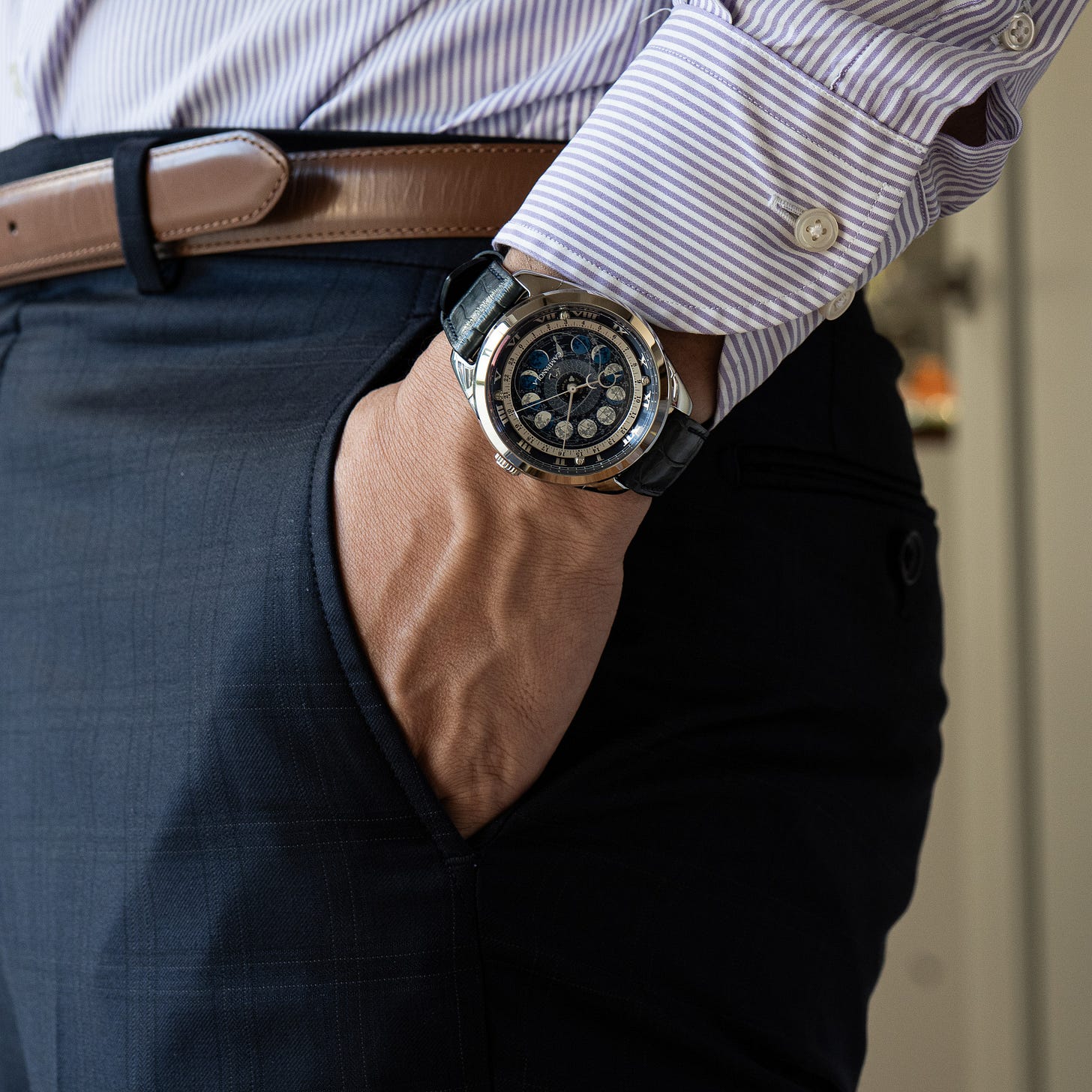



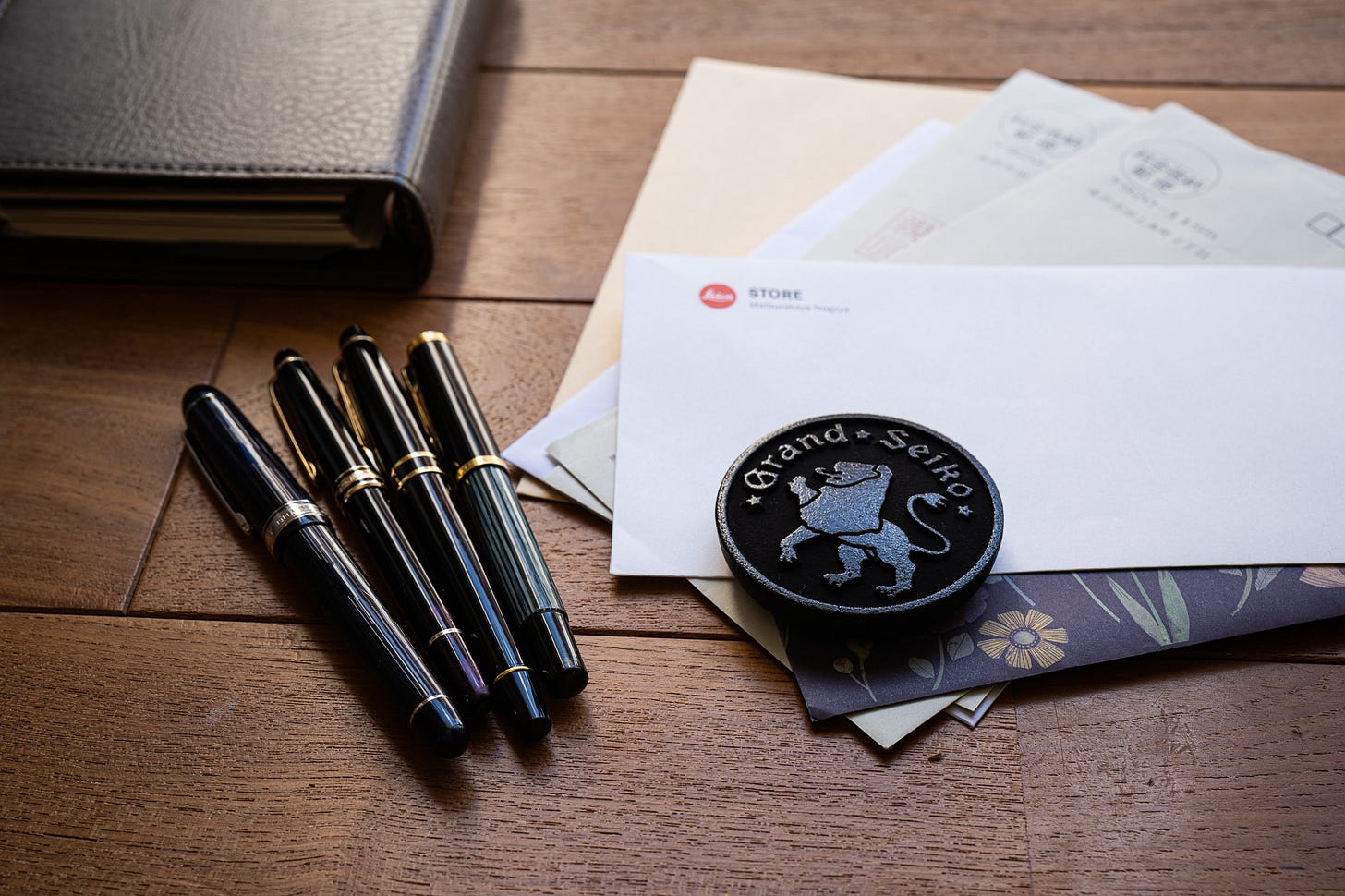


New to your account your articles are a pleasure to read. Please keep up the good work. MT.